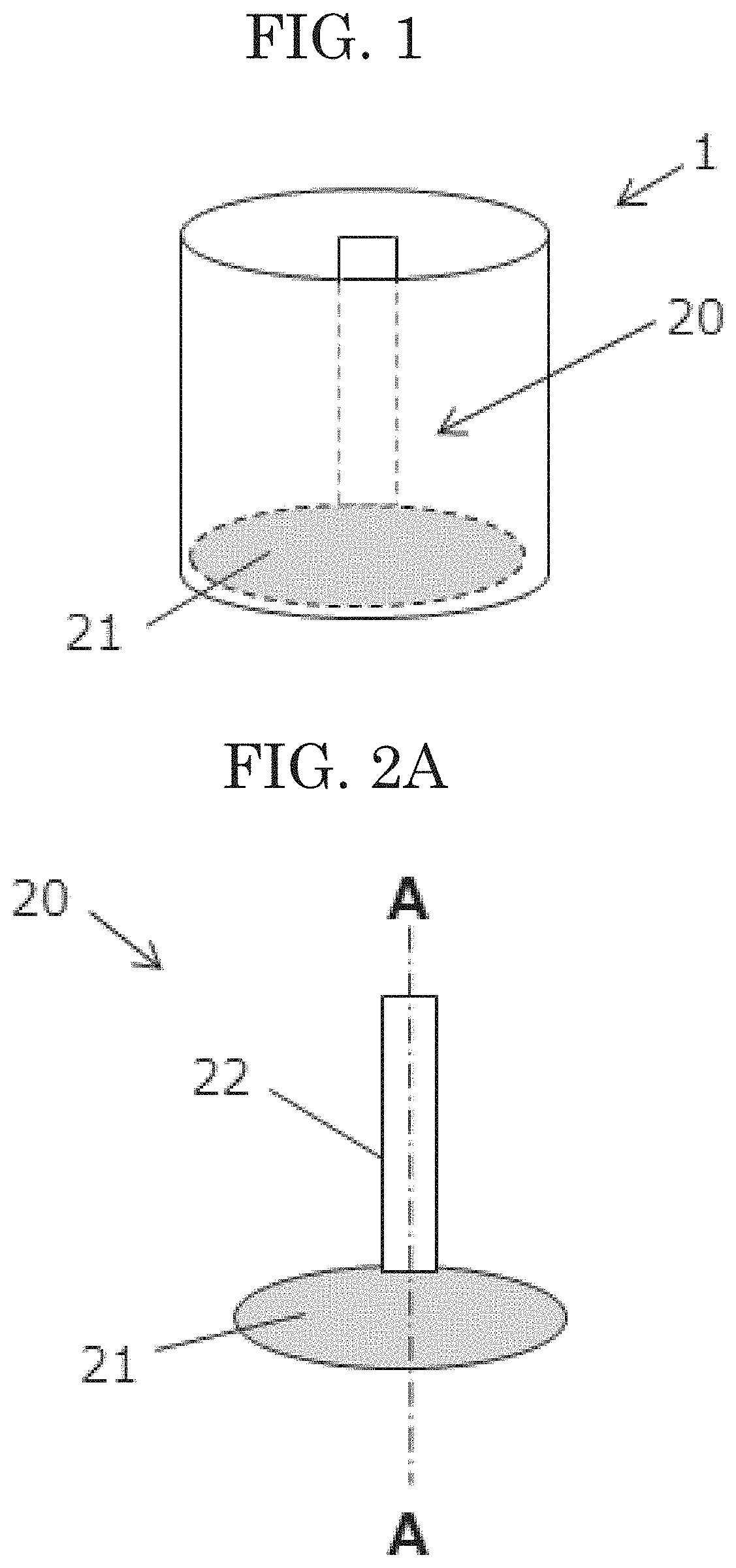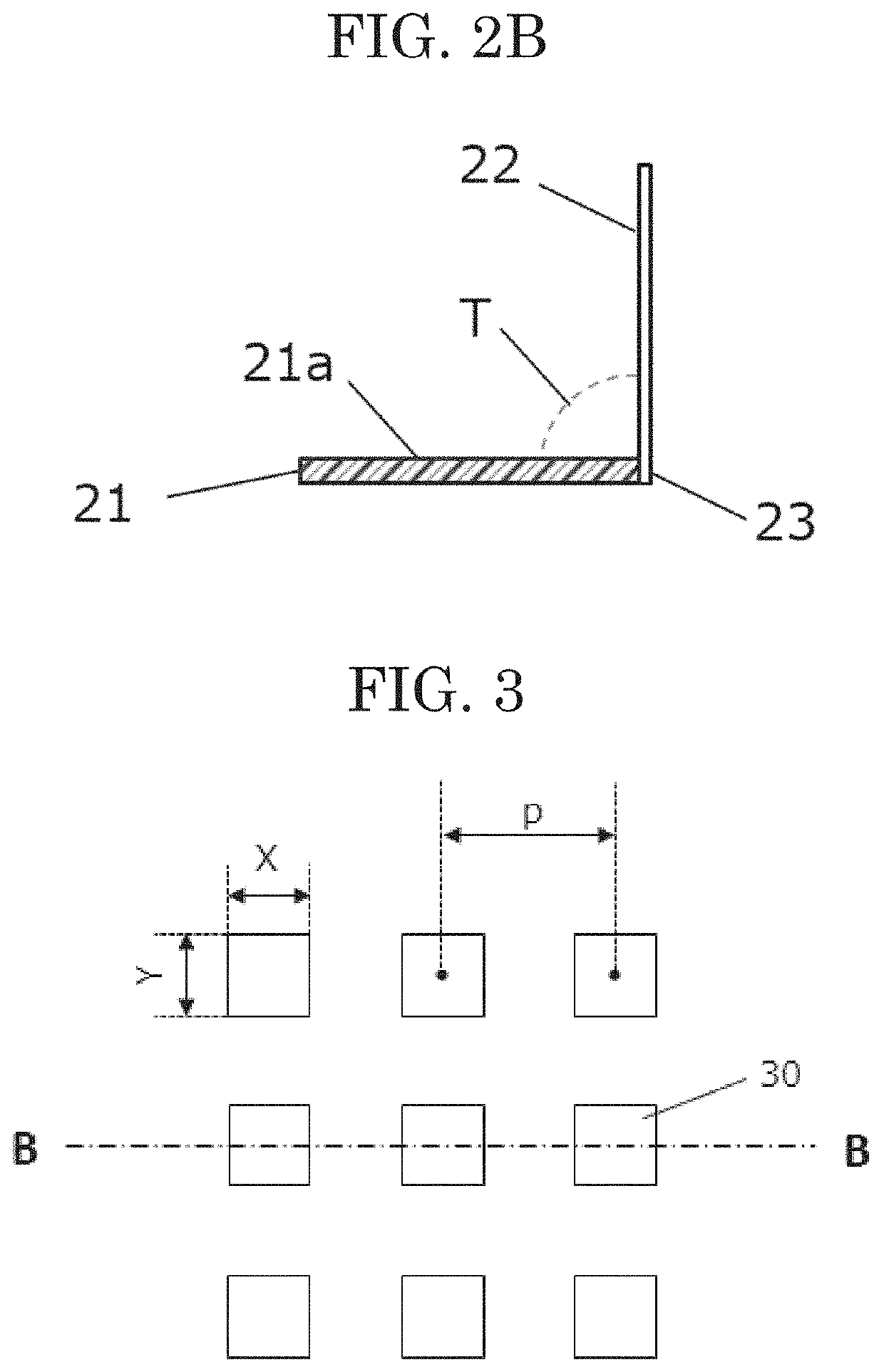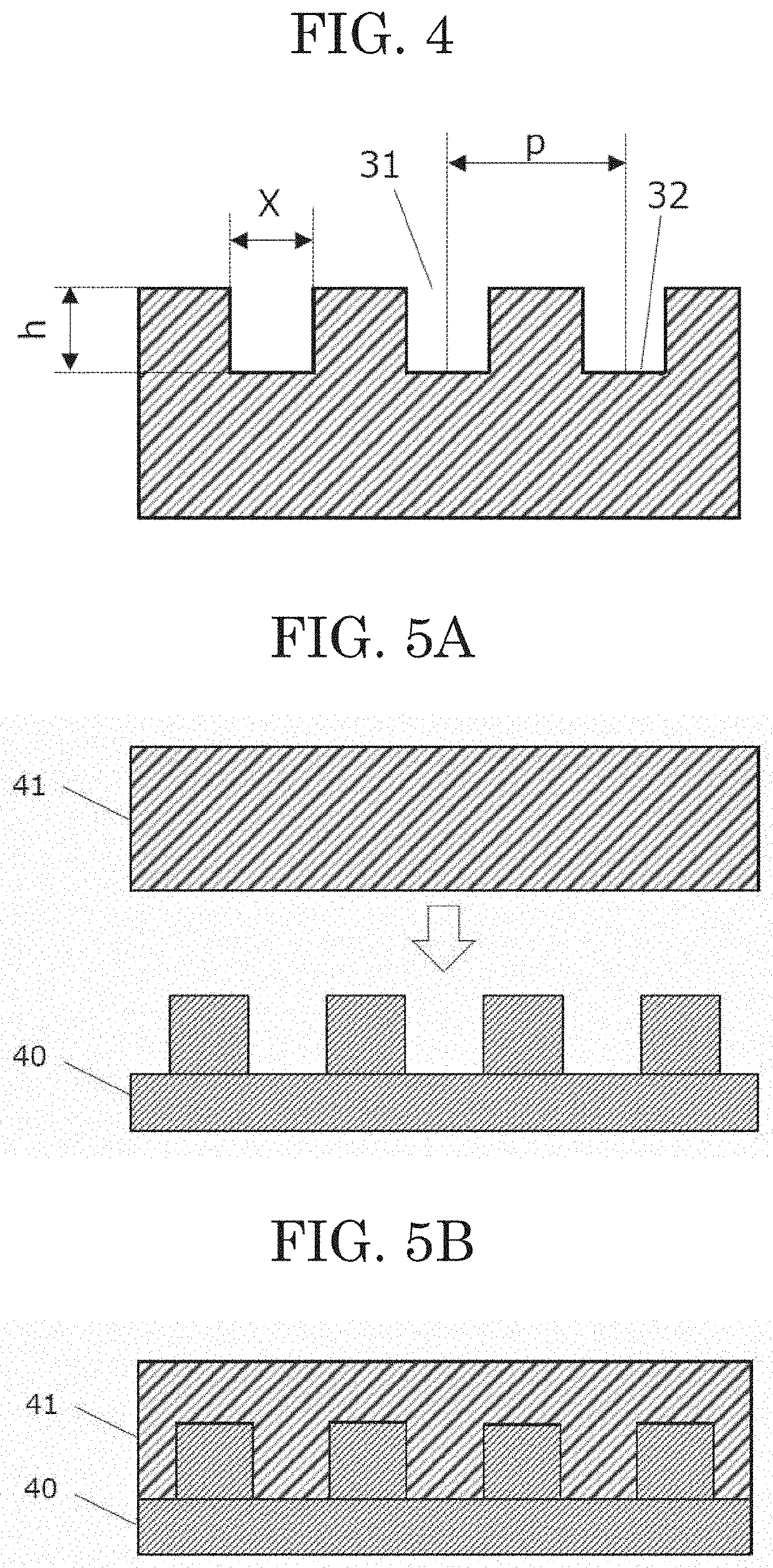Device for cell culture and cell culturing method
- Summary
- Abstract
- Description
- Claims
- Application Information
AI Technical Summary
Benefits of technology
Problems solved by technology
Method used
Image
Examples
example 1
[0216]Martensite-based stainless steel (SUS420J2, with a width of 70 mm, a length of 70 mm, and a thickness of 8 mm) was used as a mold material. A surface of the mold material to be processed was plated with electroless Ni—P, to form a plated layer having a thickness of 150 micrometers. Next, using an ultraprecision machine tool, the plated surface was cut and smoothed with a single crystal diamond bite having a curvature radius of 5 mm. Next, a range within the plated surface having a width of 20 mm and a length of 20 mm was processed to have a minutely convexed structure (in a grid pattern) with an approximately rectangular single crystal diamond bite having a tip width of 40.3 micrometers and a tip angle of 8 degrees (at one side). As the minutely convexed structure, specifically, a group of rectangular parallelepiped pillars having a width of 47 micrometers, a length of 47 micrometers, a height of 50 micrometers, a width-direction pitch (i.e., a center-to-center distance betwee...
example 2
[0221]A device for cell culture of Example 2 was obtained in the same manner as in Example 1, except that unlike in in Example 1, the minutely convexed structure of the mold was changed to a group of rectangular parallelepiped pillars having a width of 15 micrometers, a length of 15 micrometers, a height of 15 micrometers, a pitch (a center-to-center distance between convexes in the width direction of the convexed structure) of 30.0 micrometers, and a pitch (a center-to-center distance between convexes in the length direction of the convexed structure) of 30.0 micrometers.
example 3
[0222]A device for cell culture of Example 3 was obtained in the same manner as in Example 1, except that unlike in in Example 1, the minutely convexed structure of the mold was changed to a group of rectangular parallelepiped pillars having a width of 100 micrometers, a length of 100 micrometers, a height of 90 micrometers, a pitch (a center-to-center distance between convexes in the width direction of the convexed structure) of 200.0 micrometers, and a pitch (a center-to-center distance between convexes in the length direction of the convexed structure) of 200.0 micrometers, and the base material used for the device for cell culture was changed to a non-stretched polystyrene film having a thickness of 0.2 mm.
PUM
 Login to view more
Login to view more Abstract
Description
Claims
Application Information
 Login to view more
Login to view more - R&D Engineer
- R&D Manager
- IP Professional
- Industry Leading Data Capabilities
- Powerful AI technology
- Patent DNA Extraction
Browse by: Latest US Patents, China's latest patents, Technical Efficacy Thesaurus, Application Domain, Technology Topic.
© 2024 PatSnap. All rights reserved.Legal|Privacy policy|Modern Slavery Act Transparency Statement|Sitemap



